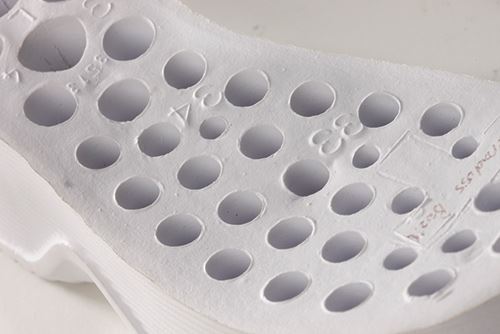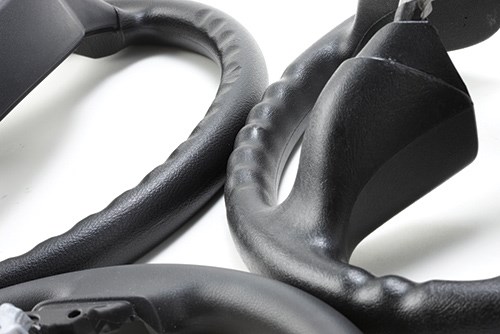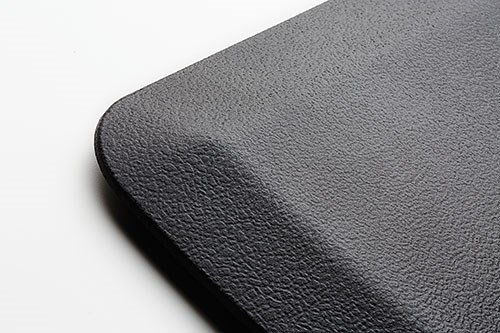Protect Your Tooling Investment
Lower your VOC footprint, upgrade manufacturing operations and improve the surface quality of your final products with water-based mold release and cleaning.
Share
Mold release agents and cleaners play a big role in sustaining mold life, improving product quality and reducing operational waste. That’s important, because molds are a high-cost investment critical to manufacturing.
Many such agents and cleaning products are solvent-based, however new mold release and cleaning technology exists that can help companies achieve production goals as well as lower their overall volatile organic compound (VOC) footprint. And these environmentally responsible products offer benefits beyond just meeting VOC regulations and standards.
Cutting VOCs
VOCs are organic chemical compounds whose composition allows them to easily evaporate at normal atmospheric conditions. They can be found in products ranging from hairspray to insect repellant to gasoline. Two of the problems with VOCs, however, are that they can pose health risks and are linked to the production of ground-level ozone.
Because VOCs can be present in solids, liquids and gasses, companies working to actively lower their exposure must consider every part of the production process—from the fuel used to generate energy for the facility to the level of VOCs emitted during the manufacturing process to the VOCs contained in the finished goods.
Existing technology makes it possible for companies to lower their VOC footprint by using different production methods and suitable alternative compounds that contain no or low amounts of VOCs. Many manufacturing aids are now available in solvent-free formulations. However, manufacturers should do their homework before adopting such alternative process aids to ensure that whatever water-based products they use will perform with the same level of quality, durability and reliability as solvent-based products.
Water-Based Mold Release
Product developers familiar with the formulation of release agents understand the sophisticated chemistry required to help polyurethane parts slip easily from a mold. These agents must work seamlessly with any post-production processes, providing a clean surface for painting or gluing, and delivering the textural and gloss requirements of manufacturers.
Such agents are not “one size fits all.” Chemists must have the ability to adjust the formulations to adapt to various conditions. This includes developing customized solutions for specific challenges caused by the variety of raw materials and process parameters found in the many manufacturing environments. Such solutions include the development of release agents for new materials and the ever-increasing challenge to improve process efficiency, as well as the necessity to meet environment and workplace requirements.
Eliminating solvents from a release agent, while good for the environment and shopfloor workers, presents a unique set of challenges to chemists. Water-based carriers have been traditionally thought of as unreliable because of their instability, susceptibility to bacteria growth and predisposition to freezing in low temperatures.
In addition to helping the part slip easily from the mold once it has been molded, release agents must first provide a dry molding surface onto which the polyurethane is applied. If the surface is wet, any number of negative results can occur, from inconsistent surface quality to blemishes on the finished part.
For example, many integral-skin applications must meet gloss and color-matching requirements. In the absence of post-mold cosmetic processes, the mold release agent is often relied upon to provide the required part appearance. Therefore, only the highest-performing release agents that help manufacturers achieve flawless and harmonious surfaces should be acceptable, regardless of the polyurethane’s composition (water or solvent).
Creating a solvent-free release agent that quickly and easily releases a molded part, but leaves a consistent, dry film on the mold’s surface is the challenge for chemists. They understand that a dry mold surface is the key to molding parts with the desired cosmetic appearance in any industry, from automotive to furniture to the manufacture of shoe soles. Without the ability to provide the same release properties, surface quality and post-molding processes, water-based solvents are useless to manufacturers.
One new release technology eliminates the difficulties related to previous water-based release agents and forms a dry release film before the polyurethane is poured. Another benefit of this water-based release technology is its ease of cleaning. The residue left on the mold is easy to remove. No aggressive, corrosive or harmful operations are required. In fact, this can result in significant cost savings to manufacturers. A mild detergent with minimal force is all that’s needed to eliminate any film left on parts or in mold cavities. The shop can save both time and money, and it eliminates the need for potentially hazardous cleaning products.
Purchasing Pointers
When purchasing mold release agents and mold cleaning products, look for products that contain no VOCs, improve production efficiency and ensure a flawless finish. The right products should offer several additional benefits as well, including minimal environmental impact; consistent part appearance across large surface areas; seal micro-porosity in the mold, offering protection from chemical or mechanical attack on its surface; remove build-up without damaging mold surface structures; provide ideal surface preparation for gluing, painting or other post-molding operations; offer improved material flow through vent holes and injection ports; result in low scrap rates; reduce downtime; and facilitate higher-quality parts.
At a time when environmental consciousness is gaining greater attention among customers and manufacturers, water-based manufacturing aids are a smart alternative that can lead to increased productivity, better part quality and lower operational costs.
Chem-Trend L.P.
Related Content
What is Scientific Maintenance? Part 2
Part two of this three-part series explains specific data that toolrooms must collect, analyze and use to truly advance to a scientific maintenance culture where you can measure real data and drive decisions.
Read MoreThe Role of Social Media in Manufacturing
Charles Daniels CFO of Wepco Plastics shares insights on the role of social media in manufacturing, how to improve the “business” side of a small mold shop and continually developing culture.
Read MoreMachine Hammer Peening Automates Mold Polishing
A polishing automation solution eliminates hand work, accelerates milling operations and controls surface geometries.
Read MoreConfronting the Mold Design Talent Drought
Recently, I reposted on LinkedIn the results of an informal survey we conducted, which revealed a shortage of skilled mold designers. It quickly gained a lot of traction. Given the response, I thought I'd summarize the feedback and keep the conversation going.
Read MoreRead Next
Are You a Moldmaker Considering 3D Printing? Consider the 3D Printing Workshop at NPE2024
Presentations will cover 3D printing for mold tooling, material innovation, product development, bridge production and full-scale, high-volume additive manufacturing.
Read MoreHow to Use Strategic Planning Tools, Data to Manage the Human Side of Business
Q&A with Marion Wells, MMT EAB member and founder of Human Asset Management.
Read MoreHow to Use Continuing Education to Remain Competitive in Moldmaking
Continued training helps moldmakers make tooling decisions and properly use the latest cutting tool to efficiently machine high-quality molds.
Read More.jpg;maxWidth=970;quality=90)









.jpg;maxWidth=300;quality=90)














